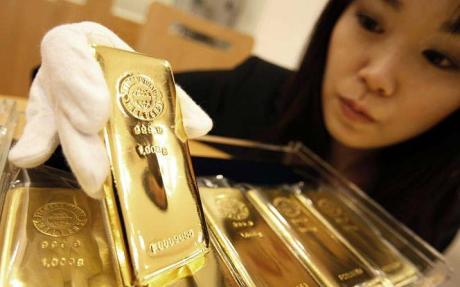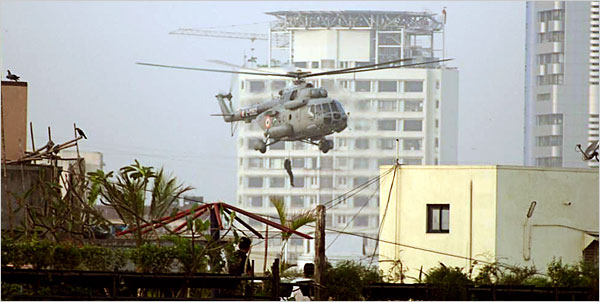Source: YouTube
Month: November 2008
1.5 Million Job Cuts So Far This Year, Factory Slump Probably Worsened: U.S. Economy Preview
Nov. 30 (Bloomberg) — The recession engulfing the U.S. economy deepened this month as employers slashed more jobs and manufacturing contracted at the fastest pace in a quarter century, economists said before reports this week.
Payrolls shrank by 320,000 workers in November, the biggest one-month drop since the 2001 terrorist attacks, according to the median estimate of economists surveyed by Bloomberg News before the Labor Department’s Dec. 5 report. The jobless rate may have jumped to 6.8 percent, the highest level since 1993.
Employment may keep deteriorating as the credit crunch continues to bite, with Goldman Sachs Group Inc. analysts forecasting a 9 percent unemployment rate by late 2009. The worsening outlook prompted President-elect Barack Obama to craft a plan to save or create 2.5 million jobs in two years to stave off what he called a “crisis of historic proportions.”
“All signals point to a very weak labor market and further weakening,” said Dean Maki, co-head of U.S. economic research at Barclays Capital Inc. in New York. “We should expect a large stimulus program shortly after Obama takes office.”
The 11th consecutive drop in payrolls would follow a 240,000 decline in October and bring the total number of jobs eliminated so far this year to 1.5 million. Factories probably reduced staff by 80,000 workers, according to the survey median.
The jobless rate was 6.5 percent in October.
Ocean currents can power the world, say scientists
A revolutionary device that can harness energy from slow-moving rivers and ocean currents could provide enough power for the entire world, scientists claim.

Existing technologies require an average current of five or six knots to operate efficiently, while most of the earth’s currents are slower than three knots Photo: AP
The technology can generate electricity in water flowing at a rate of less than one knot – about one mile an hour – meaning it could operate on most waterways and sea beds around the globe.
It’s a depression
WASHINGTON — Few prominent economists will say it, but to me it looks and feels like we are in another Great Depression or a reasonable facsimile.
The current meltdown is dubbed a “financial crisis.” But a rose by any other name would still inflict the same hardship and suffering on most people and businesses.
Clearly, the lessons have not been learned from the Herbert Hoover era. Nobel Prize-winning economist Paul Krugman, a columnist for The New York Times, says the current banking crisis is “functionally similar to that of the Great Depression.”
“Many of the symptoms” are the same, including the impotence of monetary policy — like cuts in interest rates — that has not halted the economic downturn.
FDA sets safe levels for melamine in baby formula
First the FDA says that they “could not determine a threshold for the safe amount of certain toxic chemicals in infant formula.”
And then suddenly they know “that trace amounts are safe.”
So how does the FDA determine what is ‘safe’ for your children?
The FDA has probably contacted their local preacher because they “believe that at very low levels there should not be any health concerns.”
So the FDA “believes” which translates to “the FDA does not know whether trace amounts are safe or not.”

_________________________________________________________________________
(CNN) — After first saying that they could not determine a threshold for the safe amount of certain toxic chemicals in infant formula, Food and Drug Administration officials said Friday that trace amounts are safe.

Worries over melamine in infant formula started in China and have spread to the United States.
![]()
“Amounts of the industrial chemical melamine or the melamine-like compound called cyanuric acid that are below 1.0 ppm [1,000 parts per billion] do not raise public health concerns,” said Stephen Sundlof, the FDA’s director of the Center for Food Safety and Applied Nutrition.
When it became known in September that thousands of babies in China had been sickened by tainted infant formula, the FDA ordered the testing of U.S.-manufactured infant-formula products.
Sundlof said Friday that results from 74 of 87 samples of infant formula and other products babies and young children had been completed. The results of the other 13 are pending.
That total differed slightly from the one the FDA offered Thursday, when its acting commissioner of public affairs, Judy Leon, told CNN that 77 sample results had been completed and just 10 were outstanding.
Among the 74 final test results discussed Friday, the FDA said, two samples of Nestle’s Good Start Supreme Infant Formula with Iron tested positive for melamine at levels of 137 and 140 parts per billion, well below the level of concern cited by Sundlof.
In addition, three samples of Mead Johnson’s infant powder, Enfamil LIPIL with Iron, tested positive for cyanuric acid at an average of 247 parts per billion, also well below the FDA trace level.
The FDA’s October 3 risk assessment of melamine and its analogues concluded that “levels of melamine and its analogues below 2.5 ppm in foods other than infant formula do not raise public health concerns.”
But the agency said then that it did not have enough data to determine a safe level of melamine and its analogues in infant formula.
On Friday, an FDA official said it was still not possible to determine a safe level for infant formula containing both melamine and cyanuric acid compounds, but officials “believe that at very low levels there should not be any health concerns.“
Sundlof said the trace levels of melamine or related compounds detected in the samples are 10,000-fold less than the amount associated with Chinese infant-formula contamination.
According to the World Health Organization, contaminated infant formula in China has killed four babies and caused more than 47,000 infants and children to be hospitalized with possible kidney stones.
Poverty spreading in suburbs: study

A sign reading ‘Foreclosure For Sale’ is posted on a house in the Boston suburb of Dedham, Massachusetts March 15, 2007. REUTERS/Brian Snyder
WASHINGTON (Reuters) – Poverty in the United States is spreading from rural and inner-city areas to the suburbs, according to a study, a situation that can worsen as the economy confronts what may be a protracted recession.
The study by the Federal Reserve’s Community Affairs department and the Brookings Institution Metropolitan Policy Program found that poverty levels in the world’s richest nation were on the rise.
“It shows that concentrated poverty is still very much with us, and that it can be found among a much more diverse set of communities and families than previous research has emphasized,” said Bruce Katz, a director Brookings Institution Metropolitan Policy Program.
“Poverty is spreading and may be re-clustering in suburbs, where a majority of America’s metropolitan poor now live.”
The study was released ahead of next week’s conference on concentrated poverty at the Fed. It shied away from explaining the causes of poverty, but past research have linked the phenomenon to loss of jobs in manufacturing, agriculture and mining.
With the U.S. economic outlook rapidly deteriorating, poverty could get worse.
Russia to boost staff at Iran’s nuclear power plant
Related articles: Israeli hawks ready to fly on Iran
So how will Russia react if Israel attacks Iran?
Russia definitely has NUCLEAR WEAPONS.
________________________________________________________________________
MOSCOW, Nov 28 (Reuters) – The Russian state company building Iran’s first atomic power station said on Friday it would increase personnel at the plant by at least 25 percent as it readies to start up the nuclear reactor.
Under a $1 billion construction contract, Russia has already made deliveries of nuclear fuel to the Bushehr plant on the Gulf coast in southwest Iran.
“The nuclear power station at Bushehr is entering a new phase. Atomstroyexport is increasing its efforts to bring more personnel to work on the station,” the Russian contractor said in a statement e-mailed to Reuters.
“The main technology for the station has already been installed, so the construction work is being concluded while the activisation work is getting under way,” Atromstroyexport said.
This new phase of the project — which involves readying the nuclear reactor for start up — requires that staff be increased to more than 2000 workers from the current 1600, it said.
The head of Russia’s state nuclear corporation, Sergei Kiriyenko, was quoted on Thursday by state Russian media as saying that the Bushehr plant would be completed in 2009.
Read moreRussia to boost staff at Iran’s nuclear power plant
BayernLB Gets $38 Billion Lifeline; First German Bank to Get a Government Bailout
The troubled Munich-based lender, hit hard by U.S. and Icelandic losses, becomes the first German bank to get a government bailout
Bavarian Governor Horst Seehofer warned the bank’s predicament was “very, very serious.”
BayernLB has already earned itself the unenviable accolade of becoming Germany’s first bank to request help from the government bailout funds. On Friday it added a massive bailout package to its trophy shelf: a €30 billion lifeline will be thrown to the ailing business.
To restore it to health, Bavarian Governor Horst Seehofer said the Munich-based BayernLB would be granted €10 billion ($12.9 billion). He also said the bank requires lending guarantees to the tune of €20 billion. Of that he said he would seek €15 billion in interbank lending guarantees under the federal plan.
Germany’s second biggest regional bank has been hit hard amid the financial domino effect. First, the US subprime lending crisis and subsequent credit crunch left it, and many peers, with hefty write-downs. Then, BayernLB’s problems deepened with losses generated by bank failures in Iceland.
Read moreBayernLB Gets $38 Billion Lifeline; First German Bank to Get a Government Bailout
Saakashvili admitted that Georgia began military operations in South Ossestia
From the article:
“Mr Saakashvili admitted yesterday that Georgia began military operations in South Ossestia but insisted that it was in response to Russian provocation.”
Related info:
– Vladimir Putin ‘wanted to hang Georgian President Saakashvili by the balls’.
Source: The Times
Iron Lady Nino Burjanadze finds the steel to threaten her struggling ally
She styles her hair like Margaret Thatcher and counts the Iron Lady among her political idols. Now the female face of Georgia’s pro-Western Rose Revolution is challenging her former ally Mikhail Saakashvili.
Nino Burjanadze is emerging as the key threat to President Saakashvili over the disastrous handling of the war for South Ossetia. Protest was muted while the Russian Army occupied Georgia but its withdrawal is stirring opposition demands for him to go.
Read moreSaakashvili admitted that Georgia began military operations in South Ossestia
Firefighters for 9-11 Truth: Summary of Evidence of Controlled Demolition at the World Trade Center
25 Nov 2008
This work is dedicated to Chief of Department Peter J. Ganci Jr. and his 342 fellow F.D.N.Y. members killed in action while trying to save others.
Summary of Evidence of Controlled Demolition at the World Trade Center
(Expansive citations below)
The evidence summarized below proves conclusively that 3 World Trade Center buildings collapsed on 9/11/2001 as the result of controlled demolitions. It makes no attempt to determine why, or to imply by whom. From a scientific standpoint, it is inadvisable to leap to conclusions because there are always scenarios we may not be prepared to imagine. In science, as in life, an open mind is a good thing. It is conceivable that there was a bio-threat airborne in the CIA undercover New York station in Building 7 capable of wiping out 20 million people if it wasn’t immediately neutralized by the use of Thermate. Although that is unlikely, it remains possible and therefore, scientifically, it stands as an unknown, as do many other unknowns.
However, we do know via established empirical evidence that a series of observable events took place that can be analyzed. If we learn the temperatures at which steel melts and at which jet fuel burns we can then determine whether burning jet fuel can melt steel. Proof of evidence can and should preclude personal opinions and lead us to logically necessary conclusions. A fair examination of the evidence establishes unequivocally that 3 skyscrapers collapsed as the direct and proximate result of planned demolition and that the official explanation is literally physically impossible and a blatant contradiction of established laws of science and nature.
1. The architects of the World Trade Center designed the buildings to absorb the impact of a crashing jetliner because that was an obvious structural design imperative in Manhattan. The designers of the buildings always confidently maintained that they would remain structurally secure from collapse under those circumstances.
FRANK A. DeMARTINI, MANAGER, WTC CONSTRUCTION & PROJECT MANAGEMENT has testified to the fact that the buildings at the World Trade Center should have been able to sustain multiple jumbo jet impacts without threatening the structural integrity of the buildings’ steel-reinforced frames:
“I believe that the building probably could sustain multiple impacts of jetliners because this structure is like mosquito-netting on your screen door-this intense grid. And the jet plane is just a pencil puncturing that screen netting. It really does nothing to the screen netting.”
Detailed structural analysis of the Twin Towers determined that:
“The buildings have been investigated and found to be safe in an assumed collision with a large jet airliner [Boeing 707-DC 8] traveling at 600 miles per hour. Analysis indicates that such collision would result in only local damage which could not cause collapse or substantial damage to the building and would not endanger the lives and safety of occupants not in the immediate area of impact.”
As noted by John Skilling, the engineer responsible for designing the World Trade Center, the buildings would withstand a major crash and the ensuing fires:
“Our analysis indicated the biggest problem would be the fact that all the jet fuel would dump into the building. (But) the building structure would still be there.”
See 9/11 – A Closer Look by scientist Kevin Ryan:
911 Mysteries Part 1 – Demolition:
Each tower contained:
- Over 90,000 tons of concrete;
- 47 Massive Steel Core Columns and
• 240 Steel Perimeter Columns welded together and connected by hundreds of steel joints, perpendicular cross trusses, thousands of large steel bolts and concrete-filled steel floor decking at each floor level;
- 100,000 Ton Heat Sink to absorb excess heat;
• Updated fireproofing and a fire control system designed to prevent “chimney effect” and suffocate fires by depriving them of oxygen.To convey the extent of the structural integrity of the World Trade Center, the Engineering News Record reported that:
One “could cut away all the first story columns on one side of the building, and partway from the corners of the perpendicular sides, and the building could still withstand design live loads and a 100 mph wind from any direction.”
2. No large steel-reinforced building anywhere in the world, at any time before or since 9/11, ever experienced full building collapse due to fire:
“Never before in the history of the world has a steel building collapsed due to fire.”
The unique exception is 9/11 when 3 steel-reinforced skyscrapers with state-of-the-art fire-proofing at the World Trade Center allegedly collapsed due to fires, although the fires clearly never seriously threatened the structural integrity of the buildings.
In 1945 a U.S. Air Force B-25 bomber struck the Empire State Building, killing 14 people. However, neither the impact nor the ensuing fires caused significant damage to the building’s steel-reinforced frame and never threatened the structural integrity of the building.
3. Structural analysis conducted by MIT Engineer/Scientist Dr. Jeff King concludes:
Dennis Kucinich on Russia Today: Bankers partied as economic crisis hit
A Democratic Congressman in the US has launched a scathing attack on some bank executives, who he accuses of throwing parties while the US economy goes up in smoke.
November 25, 2008, 11:29
Source: Russia Today
Ron Paul on Russia Today: I am sure they talked even about an International Central Bank
Behind the scenes at the G20 summit in Washington, world leaders discussed not only future financial regulations, but also the possibility of an International Central Bank, according U.S. congressman Ron Paul.
November 27, 2008, 9:36
Source: Russia Today
Citigroup says gold could rise above $2,000 next year as world unravels
When I first saw this article 2 days ago I decided not to publish it, because this coming from Citigroup may rather be understood as a very good advice not to buy gold.
__________________________________________________________________________
Gold is poised for a dramatic surge and could blast through $2,000 an ounce by the end of next year as central banks flood the world’s monetary system with liquidity, according to an internal client note from the US bank Citigroup.

An employee of Tanaka Kikinzoku Jewelry K.K. displays a gold bar at the company’s store in Tokyo Photo: Reuters
The bank said the damage caused by the financial excesses of the last quarter century was forcing the world’s authorities to take steps that had never been tried before.
This gamble was likely to end in one of two extreme ways: with either a resurgence of inflation; or a downward spiral into depression, civil disorder, and possibly wars. Both outcomes will cause a rush for gold.
“They are throwing the kitchen sink at this,” said Tom Fitzpatrick, the bank’s chief technical strategist.
“The world is not going back to normal after the magnitude of what they have done. When the dust settles this will either work, and the money they have pushed into the system will feed though into an inflation shock.
Read moreCitigroup says gold could rise above $2,000 next year as world unravels
Recession: When the money goes, so does the toxic wife
Enjoyed that one. We will see much more of that.
It is about a society that has artificial goals and lives a artificial life.
Brainwashed consumers that do not respect themselves, that do not respect others and do not respect their home (planet earth).
All of that will ‘go’ in the coming financial, political and environmental collapse. A lot of these changes are intentionally orchestrated of course. Research what really happens in politics and in the economy and you will find this to be absolutely true.
“The best time to buy is when blood is running in the street.” – Nathan M. Rothschild
The best time for us to buy is before the shit hits the fan. Of vital importance are water and food supplies etc. Gold and Silver coins are very important. It is vital to not live in the cities or at least have your own piece of land far away from the big cities.
As Jim Rogers said, those Maserati driving brokers (broke-rs ) will soon be unemployed and to be a farmer is one of the jobs of the future.
There have been so many warnings from people like Jim Rogers, Peter Schiff, Barton Biggs and Ron Paul.
Barton Biggs was chief global strategist at Morgan Stanley and is author of “Wealth, War and Wisdom“. His advice in January 2008: Insure yourself against war and disaster by buying a remote farm or ranch and stocking it with “seed, fertilizer, canned food, wine, medicine, clothes, etc.” His message: Listen to markets, learn from history and prepare for the worst.
Can anyone afford not to listen?
__________________________________________________________________________
Source: The Telegraph
As the recession worsens, a lot of rich men are finding their gold-digging wives are taking to their heels

Some women are like businessmen – utterly ruthless, and seeing a rich man as their career path Photo: GETTY
‘You loser!” screamed Katie, aiming a vase at her husband. “You’ve destroyed my life,” she continued, hurling it. “Just look at my hair, look at my nails! You loser, you jerk, you nobody.”
Katie’s husband, Jack, whose property portfolio disintegrated in the financial crash, had just told his wife that she would have to cut back on her thrice-weekly visits to Nicky Clarke, the nail salon in Harvey Nichols, and the oxygen facials, chemical peels and seaweed wraps at Space NK.
Not only that, but they no longer had the money to pay for an army of bullied Eastern Europeans to wait on her hand and foot.
Worse was to come – the brow-lift would have to be cancelled; her black Amex card would have to be snipped in half; and there was no way, he told her, that he could carry on spending £28,000 a year on Henry’s school fees at Eton.
Chloe, too, would have to leave the marginally cheaper (only £25,000 pa) Wycombe Abbey immediately.
Such was the aggression and verbal and physical abuse that followed that Jack was left with cut lips and blood streaming from a broken nose.
Their eight-year-old child, not yet at boarding school, sat cowering in a corner and dialling 999. When they arrived, they had to restrain Katie forcibly from attacking her husband.
Read moreRecession: When the money goes, so does the toxic wife
Afghan president wishes he could down U.S. planes

Afghan President Hamid Karzai speaks during a meeting of the General Assembly on the Culture of Peace at the United Nations in New York November 12, 2008.
REUTERS/Shannon Stapleton
KABUL (Reuters) – Afghan President Hamid Karzai said Wednesday he would bring down U.S. planes bombing villages if he could, in a sign of growing tension between Afghanistan and its Western backers as the Taliban insurgency grows in strength.
As Western dissatisfaction with Karzai has grown over his failure to crack down on corruption and govern effectively, the Afghan president, facing elections next year, has hit back over the killing of dozens of civilians in foreign air strikes.
In recent weeks, Karzai has repeatedly blamed the West for the worsening security in Afghanistan, saying NATO failed to target Taliban and al Qaeda sanctuaries in Pakistan and calling for the war to be taken out of Afghan villages.
“We have no other choice, we have no power to stop the planes, if we could, if I could … we would stop them and bring them down,” Karzai told a news conference.
He said that if he had something like the rock attached to a piece of string, known as a chelak in Dari, used to bring down kites in Afghanistan, he would use it.
“If we had a chelak, we would throw it and stop the American aircraft. We have no radar to stop them in the sky, we have no planes,” he said. “I wish I could intercept the planes that are going to bomb Afghan villages, but that’s not in my hands.”
Japan’s Recession Deepens as Factory Output Slumps

Containers are stacked at a shipping terminal in Tokyo on July 17, 2008. Photographer: Tomohiro Ohsumi/Bloomberg News
Nov. 28 (Bloomberg) — Japan’s recession deepened last month as companies cut production, consumers spent less and fewer people looked for work.
Factory output fell 3.1 percent from September, when it rose 1.1 percent, the Trade Ministry said today in Tokyo. Household spending slid 3.8 percent, the eighth consecutive drop.
Companies surveyed said they plan the sharpest production cuts in 35 years as exports decline in the wake of the worst financial crisis since the Great Depression. Sharp Corp. said it may make fewer televisions and fire workers; Toyota Motor Corp. will lay off half of its temporary staff; and Canon Inc. has postponed building a 100 billion yen ($1 billion) printer cartridge factory in southwestern Japan.
“This is an unprecedented export recession,” said Richard Jerram, chief economist at Macquarie Securities Ltd. in Tokyo. “The world stopped turning for about a month and a half after the middle of September, so it’s not surprising you’re seeing horrendous numbers.”
Taxpayer now owns nearly 60% of Royal Bank of Scotland
Royal Bank of Scotland, Britain’s second biggest bank until the credit crunch struck last year, confirmed today that is now majority-owned by the taxpayer after a £20bn bail-out by the government.
The Edinburgh-based bank announced this morning that its existing investors had shunned its £15bn cash call, leaving almost all the new shares in the hands of the government. The taxpayer now owns 57.9% of the business. Only a handful of investors took up the offer to subscribe to new shares at 65.5p because the bank’s share price had been trading below that level, giving them no incentive to support the cash call.
Read moreTaxpayer now owns nearly 60% of Royal Bank of Scotland
Wal-Mart Worker Dies in New York ‘Black Friday’ Store Stampede
Nov. 28 (Bloomberg) — A worker at a Wal-Mart in Long Island, New York, was killed when a throng of shoppers broke down the doors to the store early this morning and knocked him to the ground, according to local police and the company.
The event involved a temporary worker and was “a tragic situation,” Bentonville, Arkansas-based Wal-Mart Stores Inc., the world’s biggest retailer, said in a statement. “The safety and security of our customers and associates is our top priority.”
At least four other shoppers were hurt in the melee at the Valley Stream store, about 13 miles (20 kilometers) east of New York City, Nassau County Police said in a statement. The injured include a 28-year-old pregnant woman who was taken to a nearby hospital for observation and three people who suffered minor wounds, police said.
The 34-year-old worker, who wasn’t identified by police, was knocked down by the crowd shortly after 5 a.m. local time and taken to a nearby hospital, where he was pronounced dead at 6:03 a.m., the police statement said. The county medical examiner will determine the cause of death.
The man was working for a temporary agency on the company’s behalf, Wal-Mart said in the statement. He was trying to hold back the crowd of about 200 people when he was trampled, the New York Daily News reported, citing witnesses. Shoppers continued to file into the store as emergency workers tried to save the man, the newspaper said.
Read moreWal-Mart Worker Dies in New York ‘Black Friday’ Store Stampede
Indian Forces Battle Pockets of Militants

A commando rappelled from a helicopter near Nariman House, where militants are believed to be hiding, in Mumbai on Friday. Peter Keep/Reuters
MUMBAI, India – As the crisis in Mumbai approached its third day, Indian commandos fought running battles with militants on Friday, still struggling to end the murderous assault on India’s financial capital that has shaken the nation and raised perilous regional tensions with neighboring Pakistan.
Two Americans were confirmed killed, among a total of at least eight foreigners who the Indian authorities said had died during the attacks. In addition, five bodies of Israeli citizens were removed from a Jewish center, Chabad House, after Indian commando units stormed the attackers inside the building, Israeli officials said. The terrorists had executed the hostages during the commando raid, the Indian military said.
Shortly before night settled over the stricken city, the police said the death toll had reached 143 with the discovery of 24 bodies in the luxury Oberoi hotel, where the police had finally taken control and many guests were set free on Friday.
But the army’s operation at a second luxury hotel, the Taj, was only entering its “final phase,” according to the Indian military, with commandos battling one terrorist left inside who the army said was moving between two floors of the hotel, including an area that had been a dance floor for weddings and other parties. The army said two other terrorists had been killed overnight in the Taj hotel.
Water vapour discovered on Saturn’s moon
Huge plumes of water vapour and ice particles are bursting out from Saturn’s moon Enceladus at supersonic speeds in a way that strongly suggests they come from liquid water down below the icy surface, scientists have said.

Artist’s impression of the Cassini spacecraft passing through plumes from geysers that erupt from giant fissures in the moon’s southern polar region Photo: REUTERS
The research, published in the journal Nature, offers new evidence that the moon may harbor an underground ocean of water, meaning conditions might exist that could support life, even if only microbial organisms.
‘We think liquid water is necessary for life and there is more evidence that there is liquid water there,’ said lead researcher Candice Hansen of NASA’s Jet Propulsion Laboratory in Pasadena, California.
‘You also need energy, you need nutrients, you need organics. It looks like the pieces are there. Whether or not there’s actually life, of course, we can’t say.’
Scientists are aware of only three places where liquid water exists near the surface of a planet or other body – Earth, Jupiter’s moon Europa and now Enceladus.
In July Nasa’s Phoenix Mars Lander confirmed the presence of ice on Mars.
Russia seeks new missiles due to U.S. shield plans
“Medvedev also said Russia would try to electronically jam the U.S. system.”
The Russians supposedly have developed scalar weapons that can easily take out any electronic equipment and those longitudinal waves cannot be shielded.
___________________________________________________________________________

Russia’s intercontinental ballistic missile takes off from Plesetsk launching pad, May 29, 2007. REUTERS/Str
MOSCOW (Reuters) – Russia has intensified efforts to develop new ballistic missiles in response to U.S. plans to deploy an anti-missile system in Europe, Interfax news agency quoted a top Russian general as saying on Friday.
The decision by the United States to deploy interceptor missiles in Poland and a radar system in the Czech Republic has angered Moscow, which says Russia’s national security will be compromised by the U.S. anti-missile system.
Colonel-General Nikolai Solovtsov, Commander of Russia’s Strategic Missile Forces, was quoted by Interfax as saying that Russia had bolstered its efforts to develop new missiles.
“At the present time, work has been intensified to create the research and technical foundation for new missile systems, which will be needed after 2020,” Solovtsov said.
Russian President Dmitry Medvedev announced on November 5 that Moscow would install Iskander short-range missile systems near the Polish border if Washington proceeds with its missile plans.
Medvedev also said Russia would try to electronically jam the U.S. system.
Ruble Collapse Prompts Russia to Raise Rate on Currency Plight
Nov. 28 (Bloomberg) — Russia’s ruble headed for its biggest weekly decline against the euro in at least five years as the central bank let the currency depreciate and raised interest rates to halt an exodus of foreign capital.
Bank Rossii widened the ruble’s trading band for the second time this week by about 30 kopeks (1 U.S. cent), or 1 percent, on each side, according to Mikhail Galkin, head of fixed-income and credit research at MDM Bank in Moscow. The central bank said today it will raise its benchmark refinancing rate to 13 percent from 12 percent to help stem currency losses.
Russia is among a handful of countries raising interest rates after it drained $148 billion from the world’s third largest foreign-currency reserves since August to arrest a 16 percent currency slide against the dollar. BNP Paribas SA estimates that investors pulled $190 billion out of the country since August as oil prices fell below the $70-a-barrel average required to balance Russia’s budget in 2009.
Read moreRuble Collapse Prompts Russia to Raise Rate on Currency Plight
How an Italian judge made the internet illegal
Italian bloggers are up in arms at a court ruling early this year that suggests almost all Italian blogs are illegal. This month, a senior Italian politician went one step further, warning that most web activity is likely to be against the law.
The story begins back in May, when a judge in Modica (in Sicily) found local historian and author Carlo Ruta guilty of the crime of “stampa clandestina” – or publishing a “clandestine” newspaper – in respect of his blog. The judge ruled that since the blog had a headline, that made it an online newspaper, and brought it within the law’s remit.


